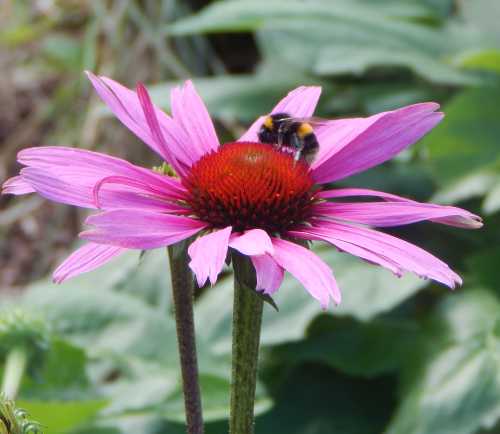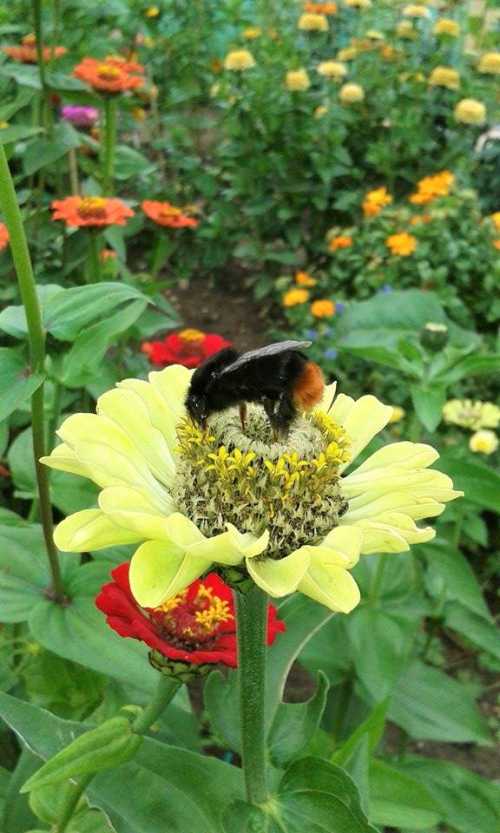Why Do Bees Like Daisies?
Daisies are a great choice if you want to attract bees into your garden.
The main reason bees visit daisies, is because they offer lots of pollen. Pollen is a vital source of protein and fat which is needed to feed developing larvae. Early sources of pollen are also very important for bumble bee queens both prior to hibernation for the winter months, and following their emergence in spring.
Daisies also provide some nectar, but pollen collecting is probably the most important reason bees visit daisies.
Now for more detail.
Although many flowers fall within the daisy group, the term 'daisy' is mostly associated with those flowers with white petals and yellow centers. These include the Oxeye daisy, Leucanthemum vulgare; and other Leucanthemums, notably various Shasta and Shaggy daisies, as well as the common daisy, Bellis perennis.
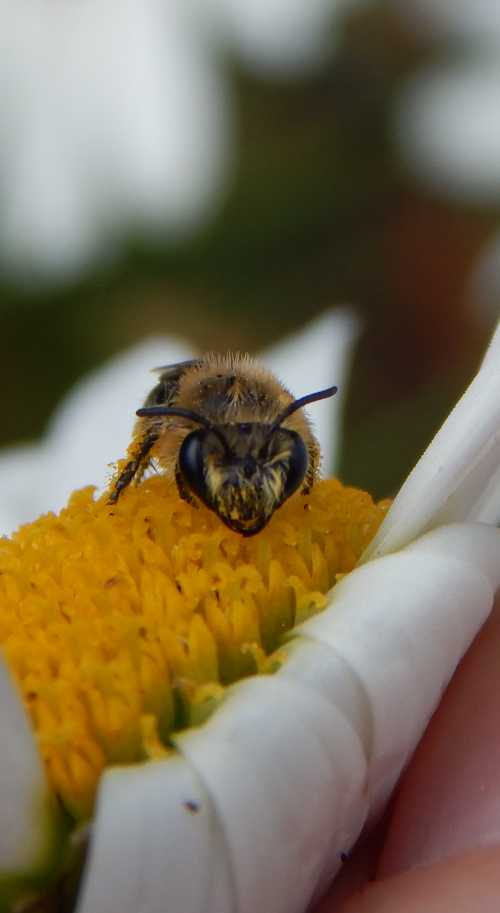 A bee (Davies colletes) perched on a daisy head and peering at the camera. But why do bees like daisies?
A bee (Davies colletes) perched on a daisy head and peering at the camera. But why do bees like daisies?Why do bees like daisies?
1. Pollen Provision
In a study examining nectar and pollen provision per flower of various species, it was found that the oxeye daisy is a rich source of pollen for bees. Research suggests that one Oxeye daisy flowerhead can provide over 1μl of pollen per 24 hour period1.
It was proposed in the study that Oxeye daisies among others, are valuable for many solitary species, including Davies colletes (as pictured below, with scopa laden with pollen on the rear legs).
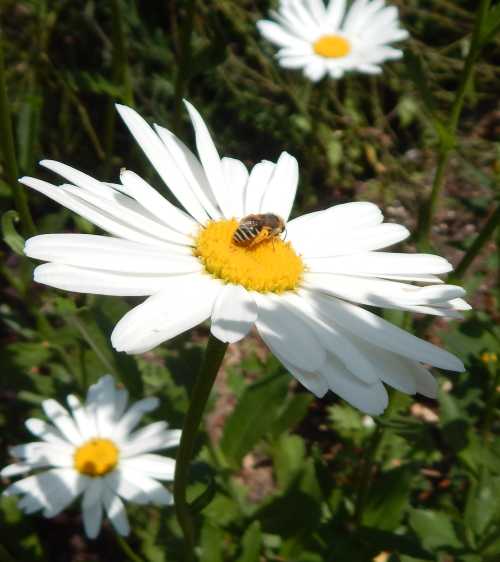 Davies colletes female on oxeye daisy.
Davies colletes female on oxeye daisy.Take into account that Oxeye daisies flower in clusters and often form part of wildflower mixes, and it is clear that this flower is an important food source in spring and early summer.
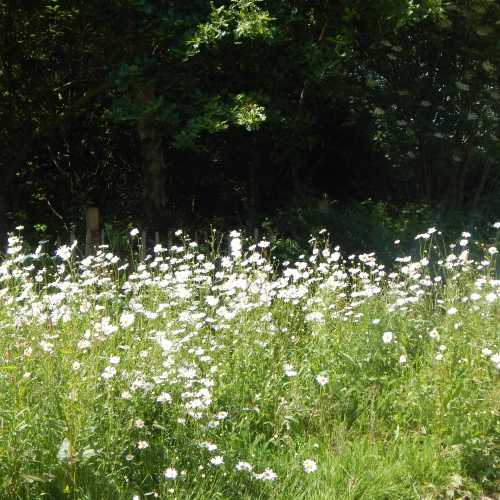 A patch of oxeye daisies growing wild a short walk away from my home.
A patch of oxeye daisies growing wild a short walk away from my home.Within the study, other flowers which offered high pollen rewards were:
- poppies,
- mallows,
- knapweed and
- rosebay willowherb.
Below a bumble bee foraging on a daisy has pollen on its head and thorax. The tiny inflorescences around the edge of the yellow center of the daisy flower are open and visible.
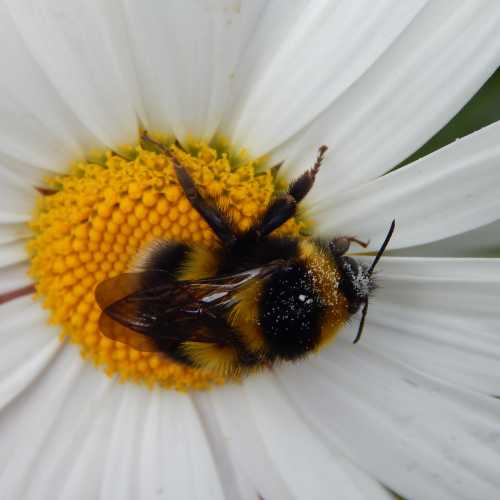
The small, common daisy, Bellis perennis provided less than half the amount of pollen for bees than its larger relatives, yet it provided slightly more pollen than another popular plant with bees Origanum vulgare (although oregano is very attractive for a range of bees, butterflies and other pollinators, and offers 114 μg nectar per flower per day, versus 51 μg for Bellis perennis).
Daisies and nectar provision for bees and pollinators
In the same study mentioned above, it was found that an Oxeye daisy flowerhead can provide about 520 nectar sugar mass per floral unit μg/day.
Although a number of flowers provided more nectar, including spear thistle, cosmos, dandelions, knapweed, Echium vulgare among others, nevertheless, it offered more nectar than another bee-favourite: red clover.
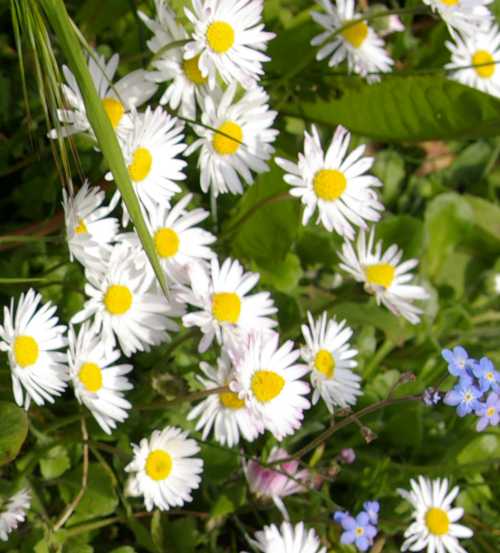
The common daisy, Bellis perennis offered significantly less nectar than the oxeye - about a sixth of the amount.
Which daisies to include in your garden for bees and other pollinators?
Firstly, please remember that this website receives visits from all over the world, and as such, it's important to check whether species suggested are suitable for your local growing conditions.
However, whilst you may not wish to see too many daisies springing up from your lawn (although personally I rather like them), here are 3 daisies you might like to consider for your garden:
1. Oxeye daisies - as described above.
2. Leucanthemum × superbum - Shasta daisy - many cultivars - for example, try 'Snowcap', 'Becky', or 'Brightside'.
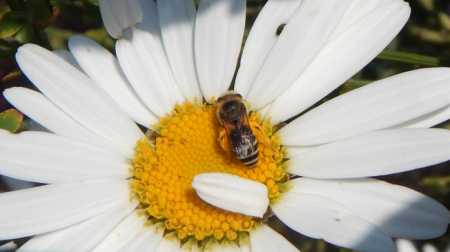 Davies colletes on a shasta daisy
Davies colletes on a shasta daisy
3. Shaggy daisy - Bees also like some of the shaggy daisies often selected for gardens.
The shaggy daisy has many slender petals giving it a somewhat more 'ruffled' look than its broader petalled relatives.
Below you can see a female solitary bee species, Halictus rubicundus, the Orange-legged furrow bee, foraging on a flower head. She is joined by a number of small beetles - or possibly flies.
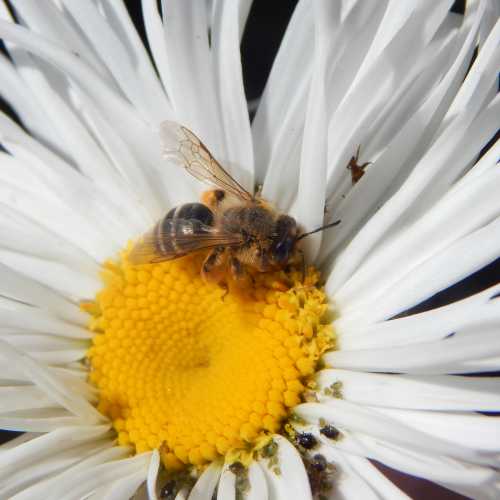
Here below we see a bumble bee visiting a shaggy daisy flower head in my garden.
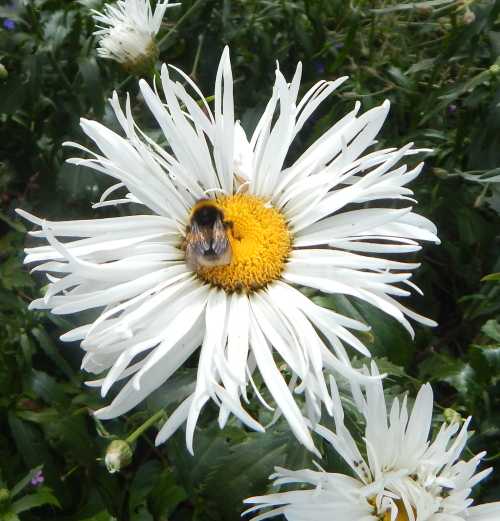
Other members of the daisy family
The term 'daisy' is also a common name used for flowers belonging to the Asteracea family, and they are also known as 'Composites'. Compositae have the appearance of one large flower, but in fact, what looks like one flower head is actually a cluster of many tiny flowers. According to the Encyclopedia Britannica, there are 23,600 flower species within the Asteracea group.
Many popular garden flowers fall into this group, which includes for example Sneezeweed, Cosmos, dahlia, marigold, Zinnias, and sunflowers, among others.
Well-known wildflowers in this category include the dandelion, ragweed, tansy, groundsel and field sow thistle.
References
1. Hicks DM, Ouvrard P, Baldock KCR, Baude M, Goddard MA, Kunin WE, et al. (2016) Food for Pollinators: Quantifying the Nectar and Pollen Resources of Urban Flower Meadows. PLoS ONE 11(6): e0158117. https://doi.org/10.1371/journal.pone.0158117
Which Dahlias Do Bees Like?
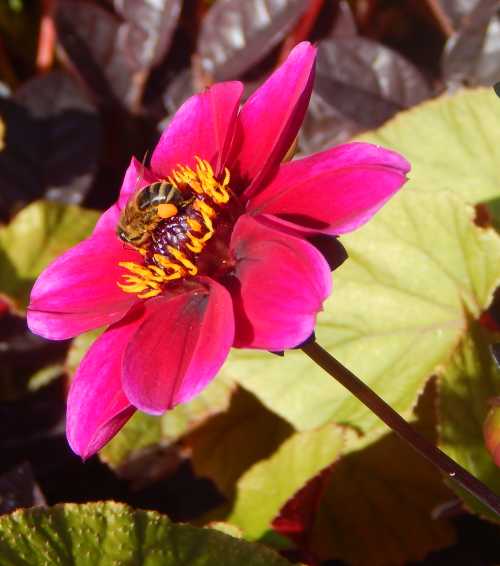
If you found this page helpful or interesting, I'd really be grateful if you would share it with others - if not this page, perhaps another, such as Gardening For Bees.
Thank you so much :) .
